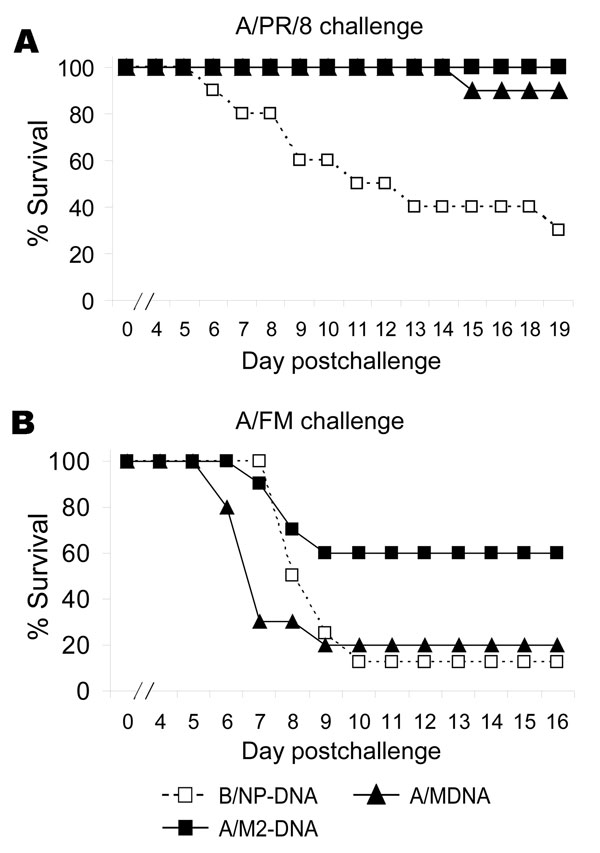Volume 13, Number 3—March 2007
Research
Matrix Protein 2 Vaccination and Protection against Influenza Viruses, Including Subtype H5N1
Figure 3

Figure 3. Results of matrix protein 2 (M2)–DNA vaccination, showing protection against divergent influenza viruses. Mice (8–10 per group) were vaccinated with DNA as described in Methods except at a dose of 100 μg/mouse. Approximately 2 weeks after the last dose of DNA, mice were challenged with 7× the 50% lethal dose (LD50) of virus and monitored for survival. A) A/PR/8 challenge: Cumulative survival rate of mice vaccinated with M-DNA or M2-DNA was significantly higher than that of mice vaccinated with B/NP-DNA (p<0.001, log rank). B) A/FM challenge: Cumulative survival rate differed significantly among groups (p = 0.041, log-rank), although in post hoc Holm-Sidak tests, pairs did not differ significantly (p≥0.05).
Page created: June 29, 2010
Page updated: June 29, 2010
Page reviewed: June 29, 2010
The conclusions, findings, and opinions expressed by authors contributing to this journal do not necessarily reflect the official position of the U.S. Department of Health and Human Services, the Public Health Service, the Centers for Disease Control and Prevention, or the authors' affiliated institutions. Use of trade names is for identification only and does not imply endorsement by any of the groups named above.